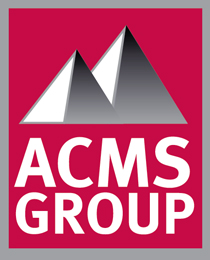On-Line Leak Sealing
Industrial leak sealing is an essential aspect of any industrial plant operation. A small leak can lead to major equipment failures, increased downtime, and potential environmental hazards. In recent years, on-line industrial leak sealing has become increasingly popular among plant operators and maintenance professionals. In this blog post, we will explain what on-line industrial leak sealing is, its benefits and limitations, and the various techniques and methods used for it.
What is On-Line Industrial Leak Sealing?
On-Line Industrial Leak Sealing is a process of sealing leaks in equipment while it is still in operational conditions. As opposed to traditional repair methods that require the shutdown of equipment, on-line leak sealing is performed during the normal operation of the machine. It involves the use of specific materials and methods that can withstand the high temperature and pressure that the equipment generates.
On-line leak sealing is commonly used in industries such as oil and gas, chemical, power generation, and water treatment plants. The technique offers several advantages over the traditional repair method, including reducing downtime, minimizing production losses, and avoiding environmental hazards.
Benefits and Limitations of On-Line Leak Sealing
On-line industrial leak sealing has several benefits, including:
1. Improved Safety
One of the main benefits of on-line industrial leak sealing is improved safety. It reduces the risk of hazardous gas and liquid leaks, which can pose a significant danger to human life in addition to causing untold economic loss. The positive environmental impact of the technique also contributes to safer working environments, which is of utmost importance.
2. Reduced Downtime
An unexpected shutdown can cause significant losses to a company. It can lead to a considerable amount of lost work hours, resources, and manpower. On-line leak Sealing allows the repair of equipment without the need for it to be taken offline. The result is less downtime and more uptime for the equipment, leading to increased efficiency and profitability.
3. Cost-Effective
On-line leak sealing is a cost-effective solution compared to traditional repair methods. It eliminates the cost of equipment shut down, the need to replace damaged equipment, and associated costs such as transportation, assembly, and testing. Additionally, on-line leak sealing is performed quickly, reducing labor costs.
Despite its benefits, on-line industrial leak sealing has some limitations. It is not a complete replacement for traditional repair methods, particularly when the asset is old or suffering from extensive unanticipated corrosion. However, on-line industrial leak sealing is an excellent solution when immediate repair is necessary, and shutting down the equipment is not possible.
Techniques and Methods Used for On-Line Industrial Leak Sealing
There are several techniques and methods used to carry out on-line industrial leak sealing. The type of technique used can vary depending on the type of equipment and the nature of the leak. Some of the popular techniques used in the industry include:
1. Mechanical Sealing
Mechanical sealing is a common type of on-line industrial leak sealing. It involves fitting a seal directly onto the source of the leak, preventing further loss of material. The technique is suitable for small to medium-sized leaks that emanate from valves, flanges, and fittings. Mechanical seals are used to provide long-lasting solutions.
2. Weldless Repair
Weldless repair is another common technique used in on-line leak sealing. It involves the use of composite materials and specialized adhesive compounds, applied in situ to fix leaks. For this process, a composite patch is provided and placed over the leak. Next, a proprietary blend of adhesive material is used to seal the leak. This method is used for water, oil, and gas leaks in process piping and other components.
3. Compression Packing
Compression Packing is a technique used to seal on-line leaks in rotary and reciprocating equipment. The packing is made of soft, relatively resilient material that is placed between the shaft and the pump or valve body. Once compressed, the packing acts as a seal, preventing the leaking fluid to escape. Compression packing is an easy and fast solution when a fix needs to be achieved quickly, and the packing can be sourced in the right size.
4. Flange Connections
Flange connection is an area on equipment that is prone to leaking. It is because it is frequently dismantled to enable maintenance, cleaning, and inspection. To prevent leaks in flange connections, specialists use sealants, gaskets, and mechanical fasteners. These connections should be examined and attended to regularly to avoid problems.
In Conclusion
On-line industrial leak sealing is an efficient way to fix leaks in equipment while it’s still in operational conditions. It provides several benefits, including safety, reduced downtime, and cost-effective solutions. Although there are some limitations to the technique, it remains a valuable tool in industrial plant operation. The techniques and methods used for on-line industrial leak sealing vary depending on the equipment’s nature and the leak’s severity. Mechanical sealing, weldless repair, compression packing, and flange connections are some of the popular techniques used in the industry. At ACMS Group, we offer various on-line industrial leak sealing services to meet different needs in various industries. Contact us today to learn more.
